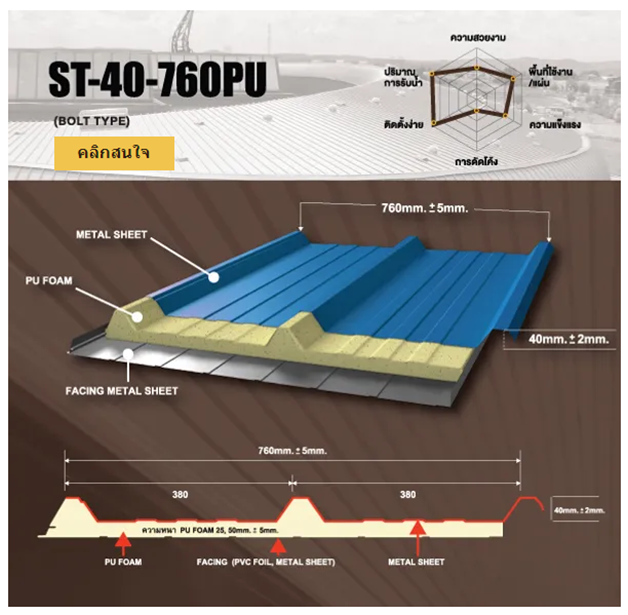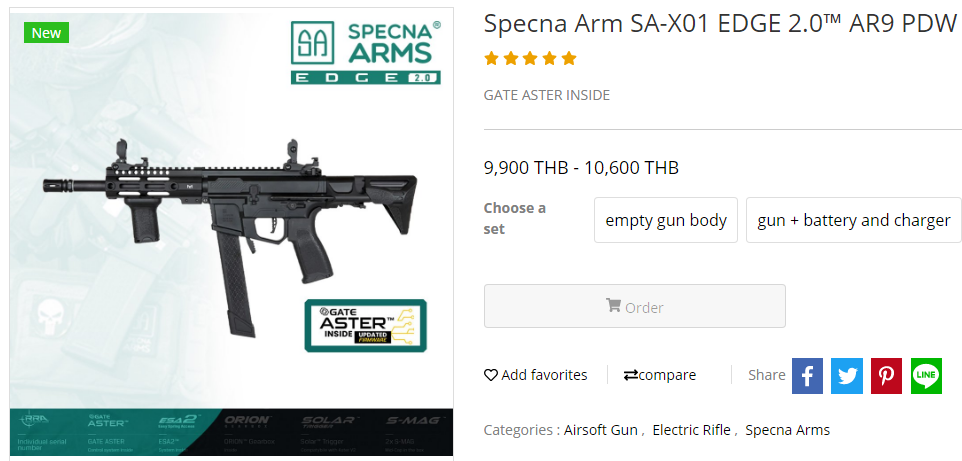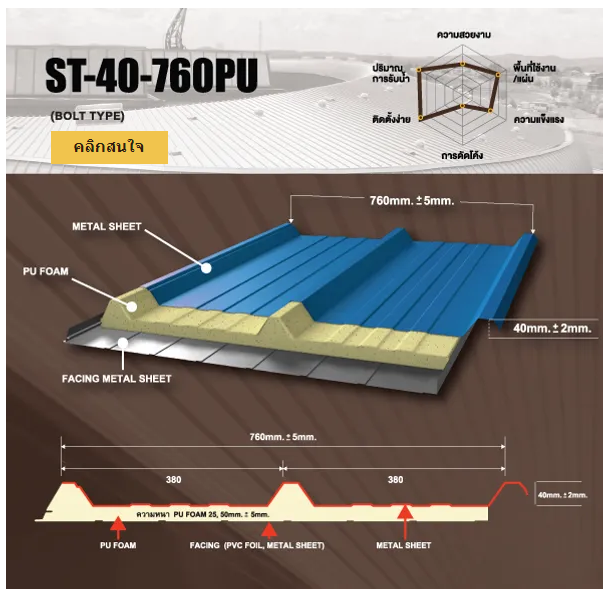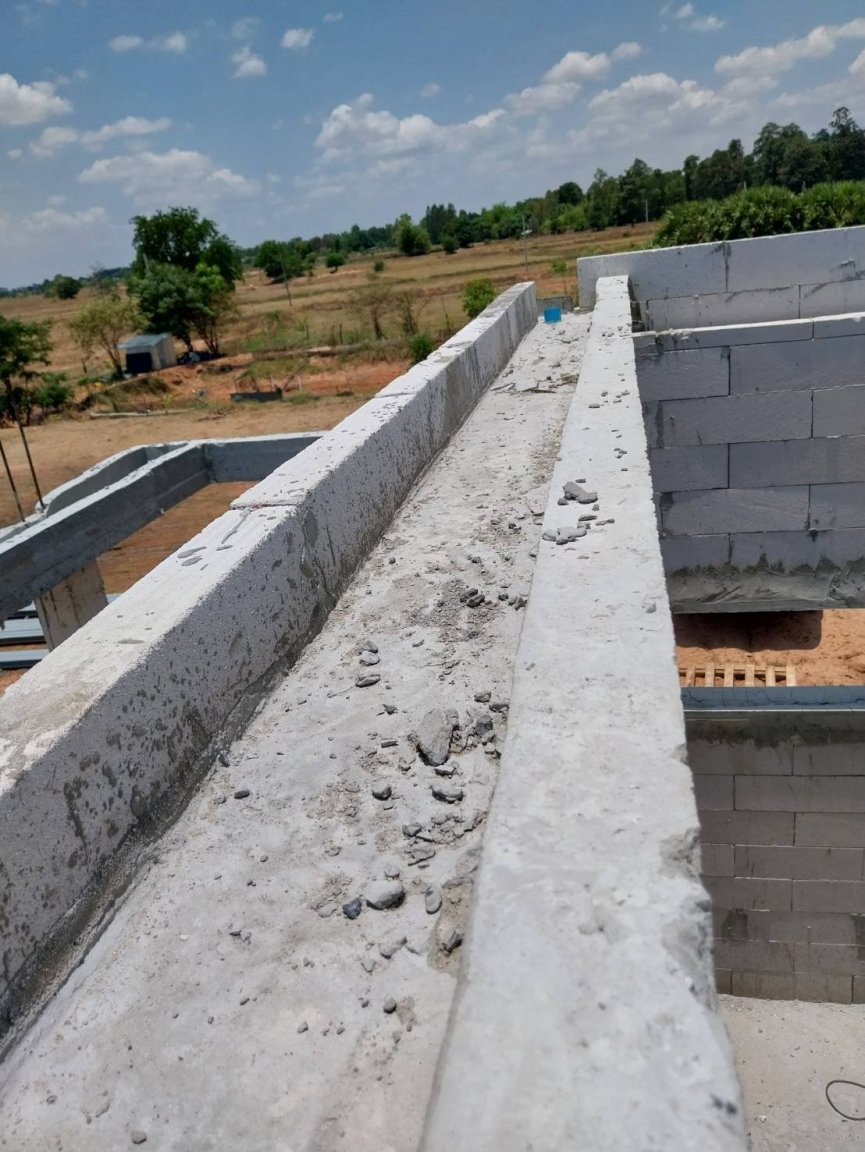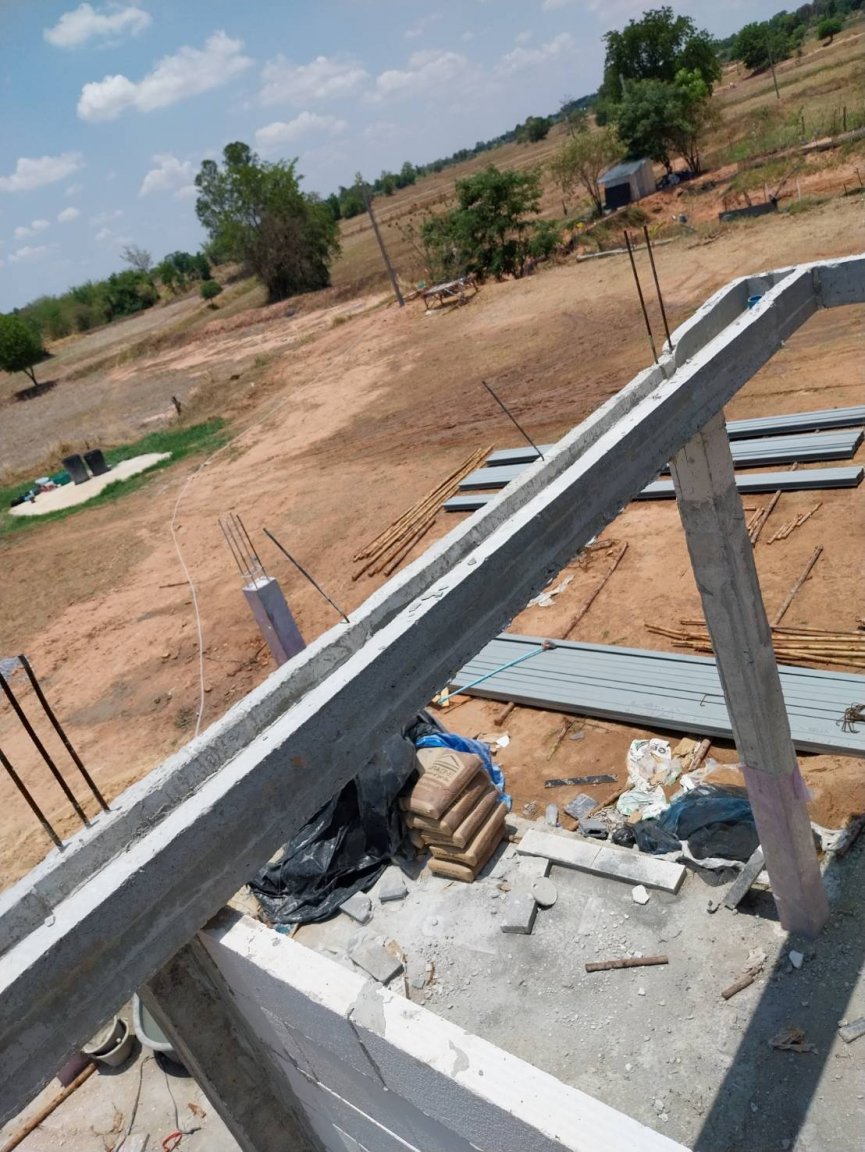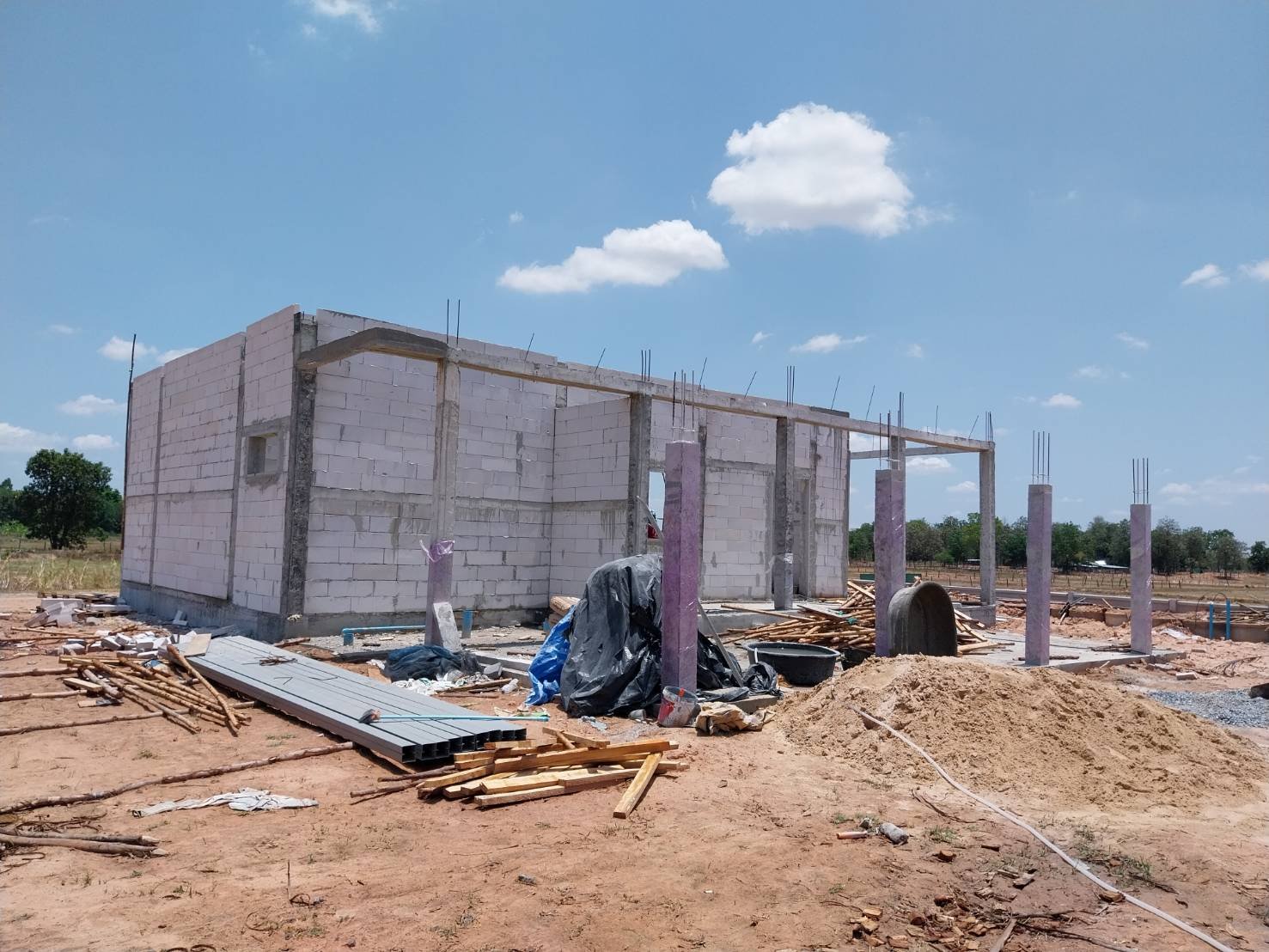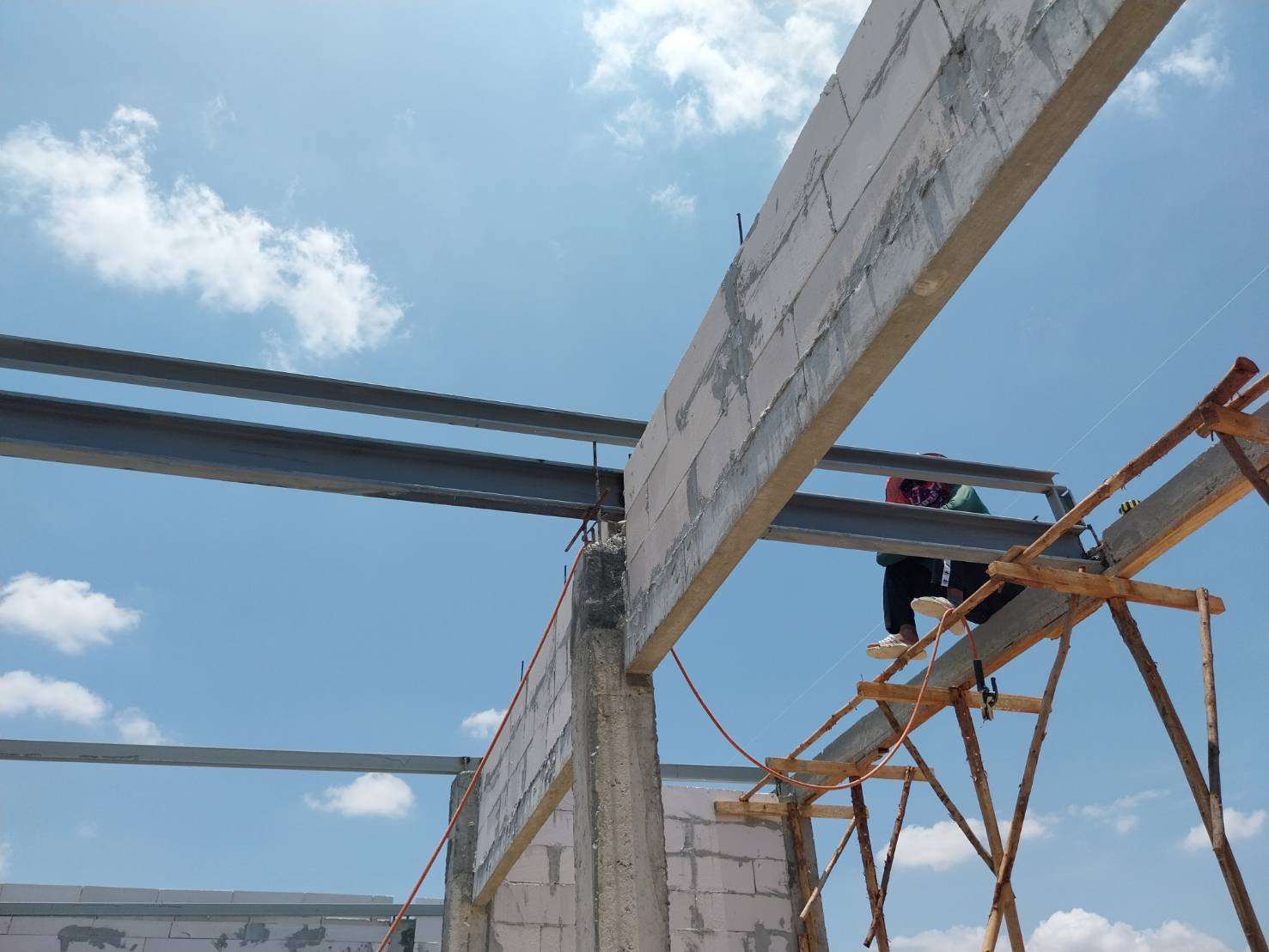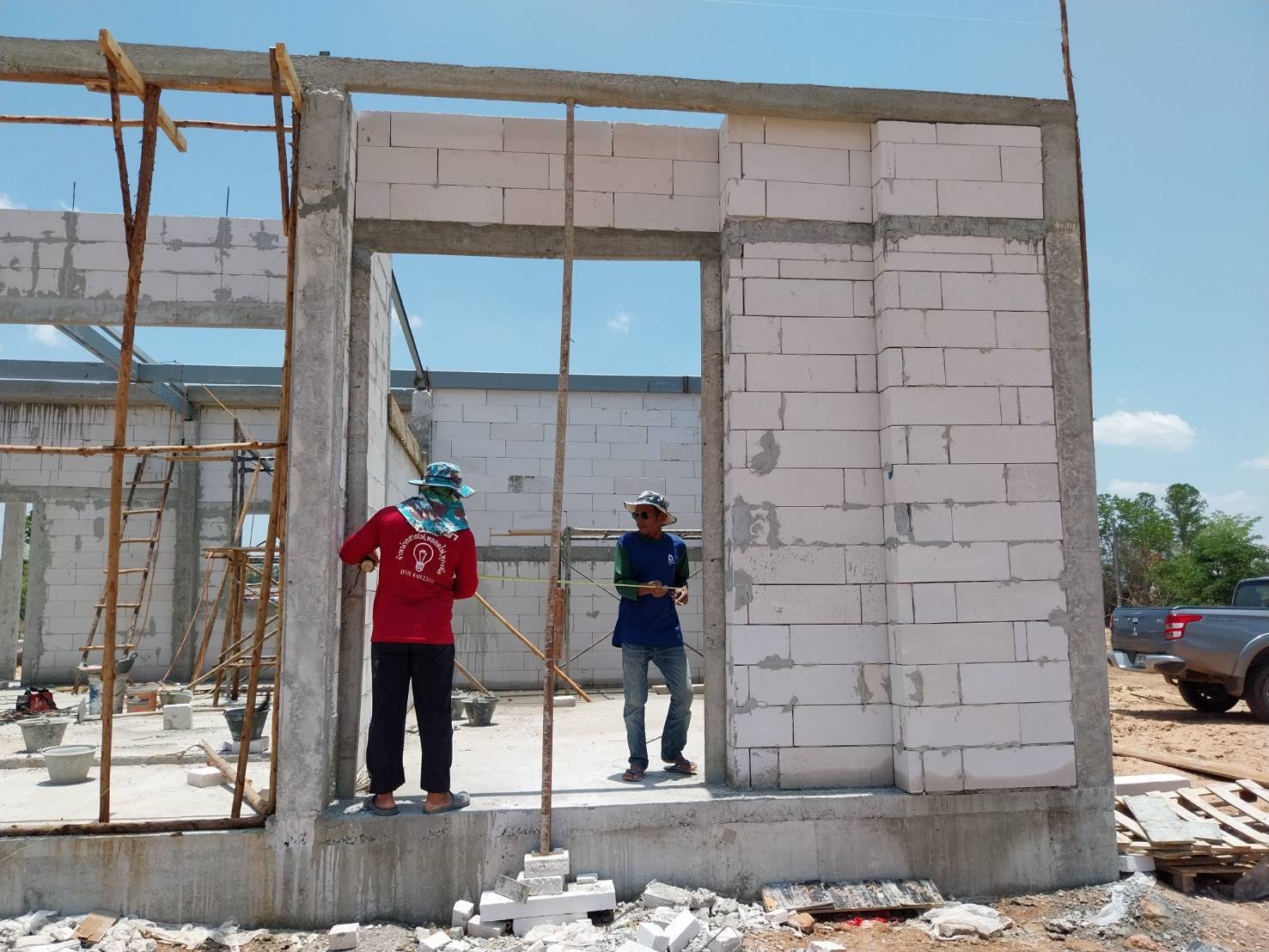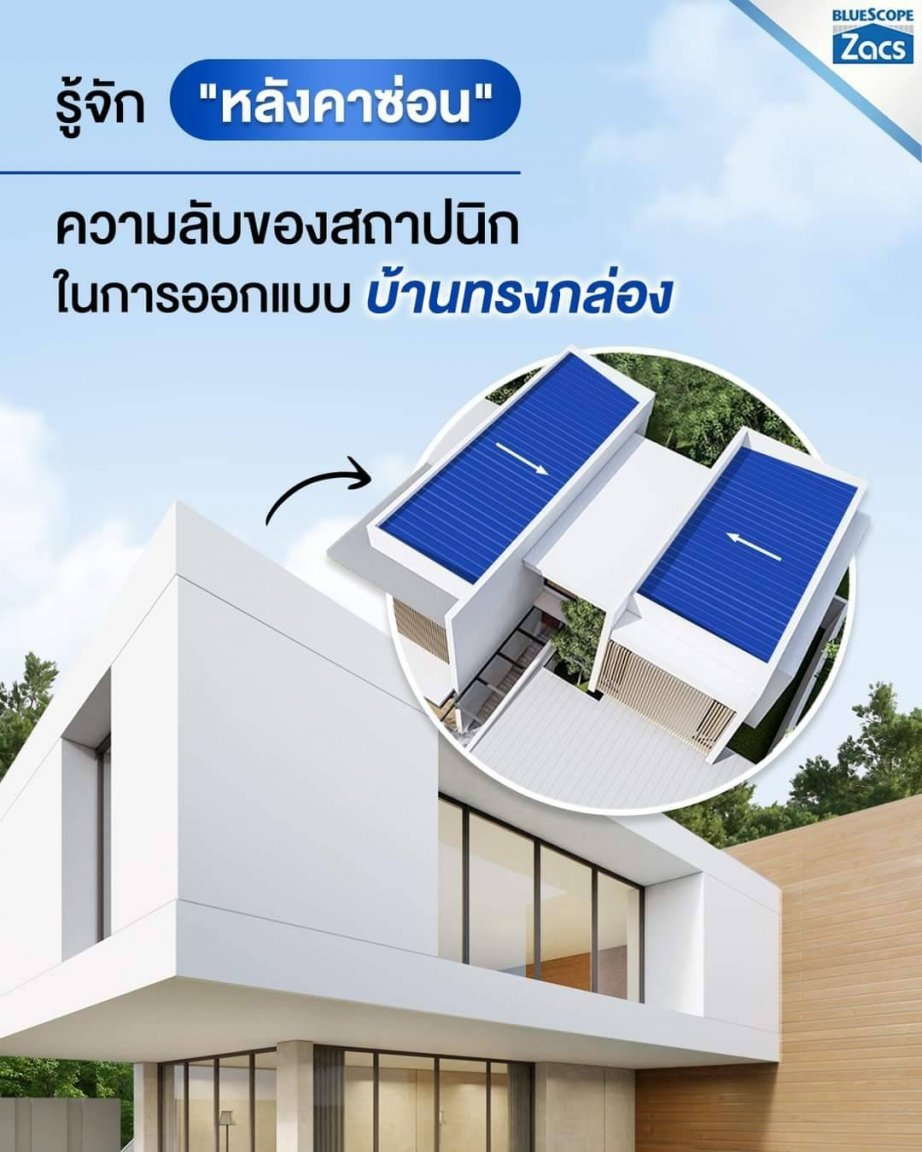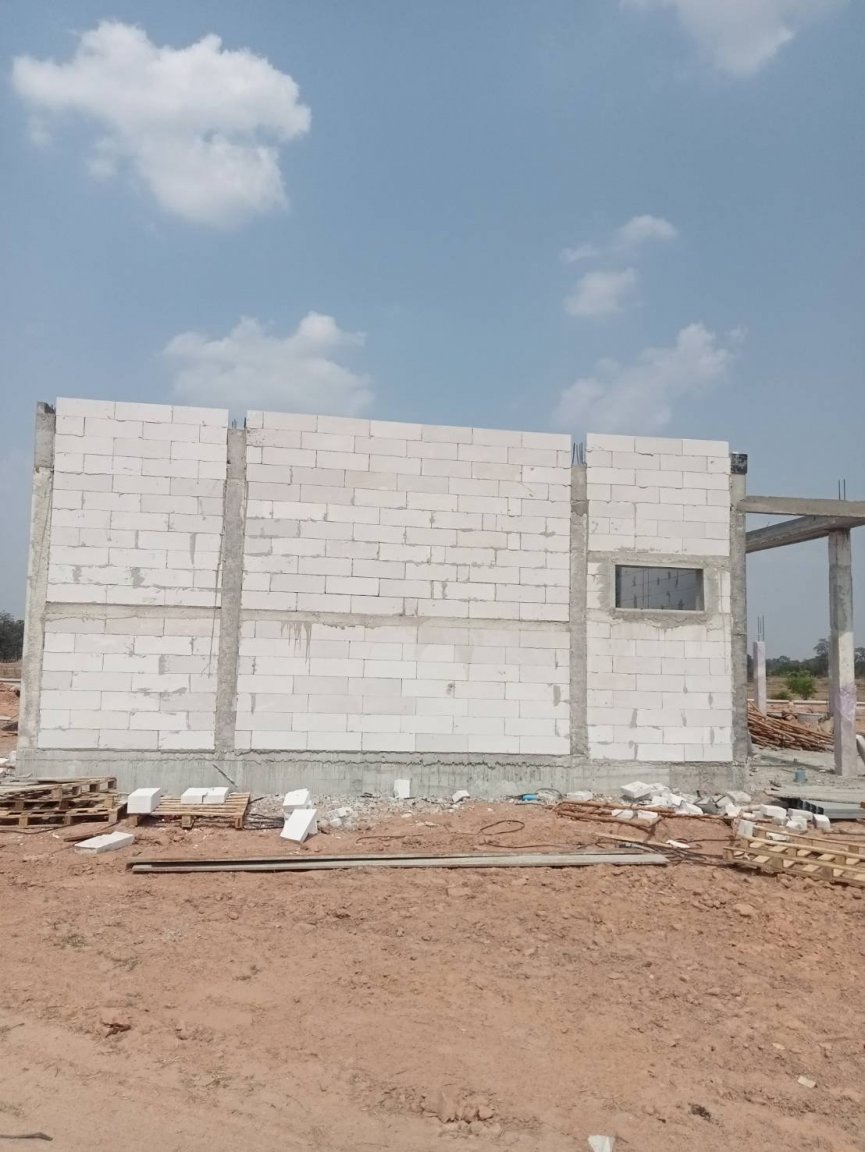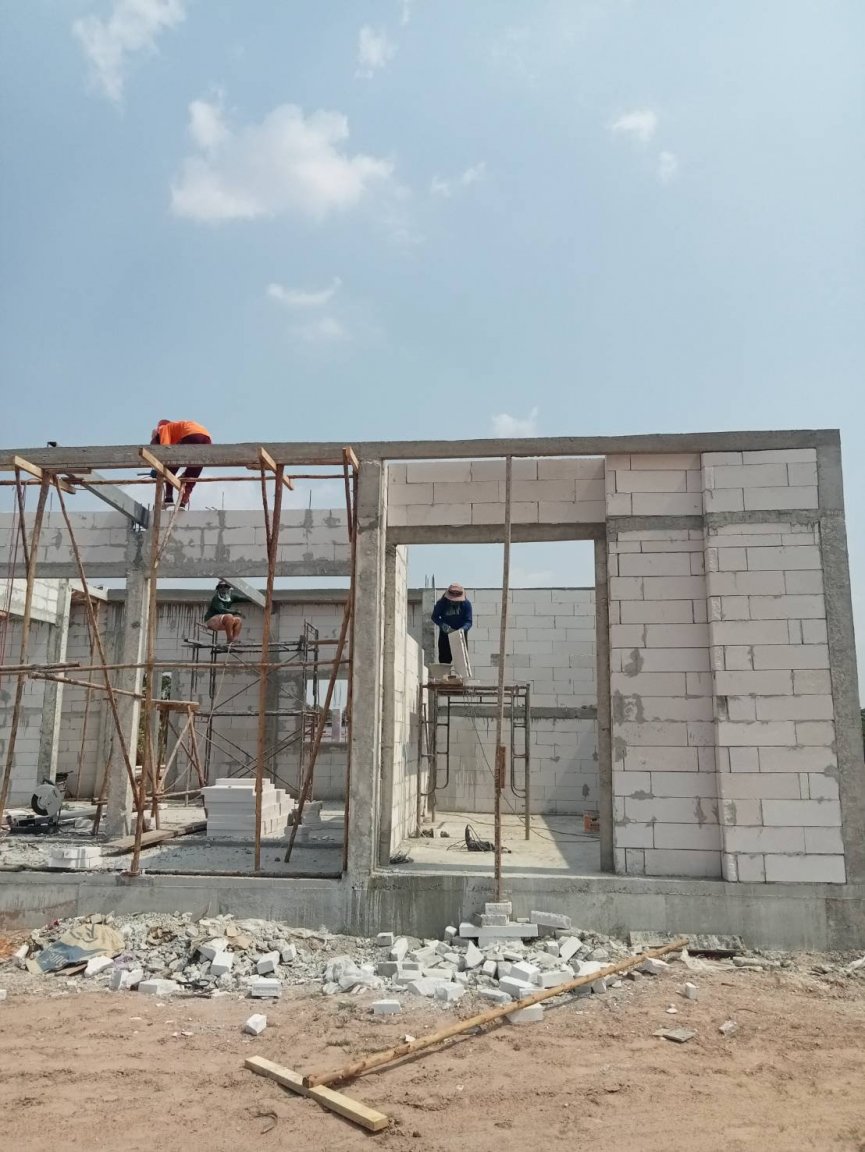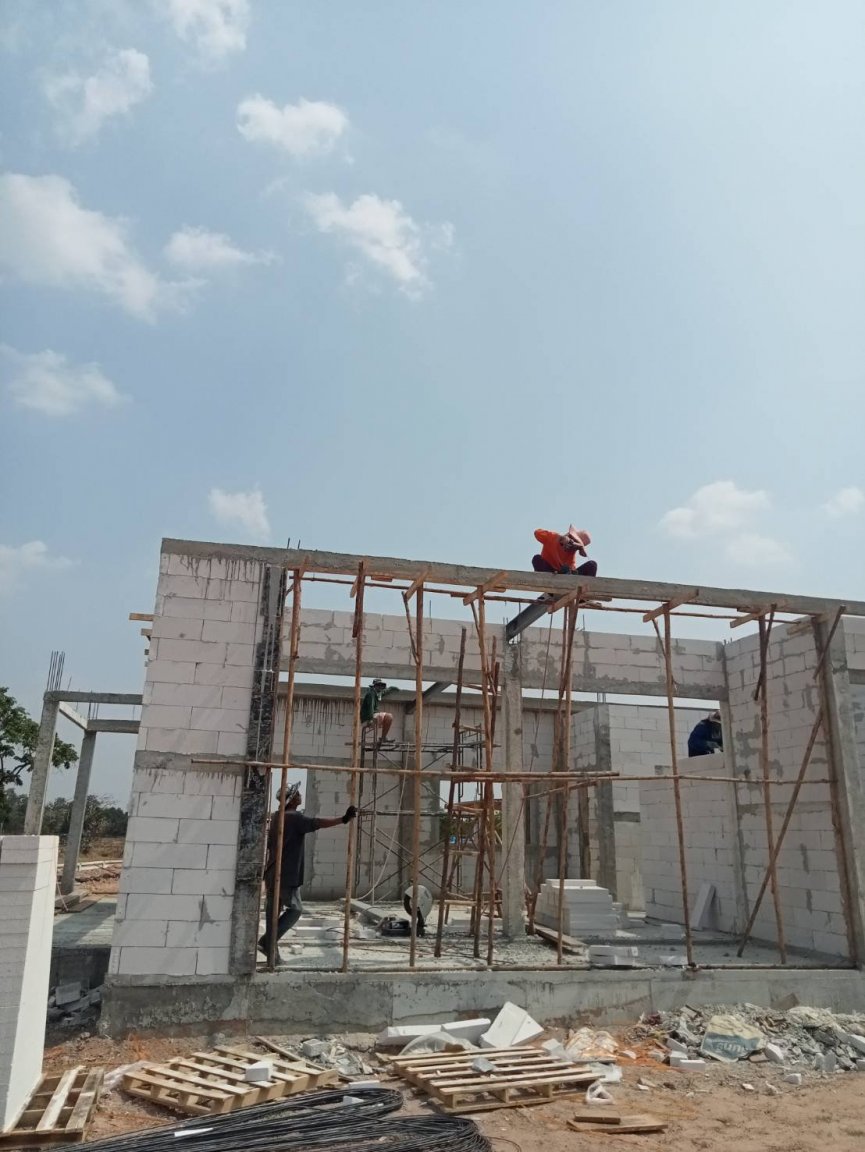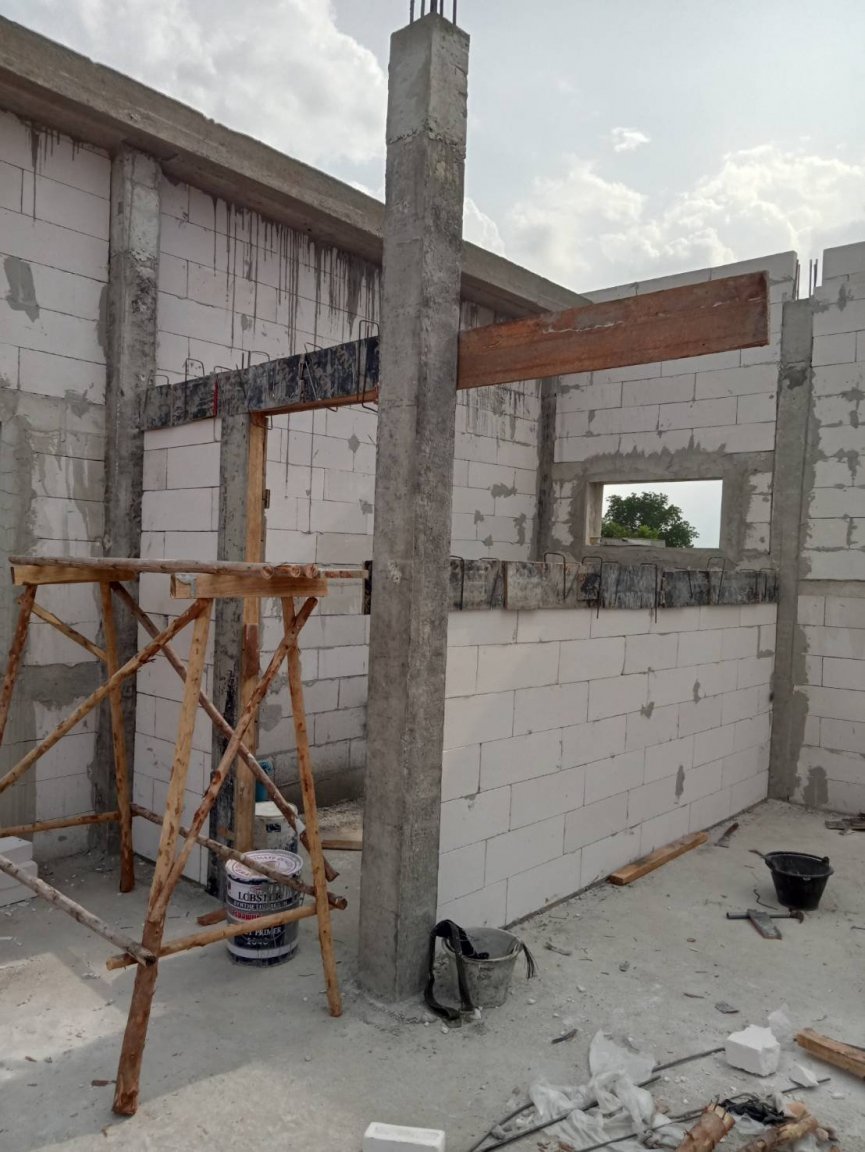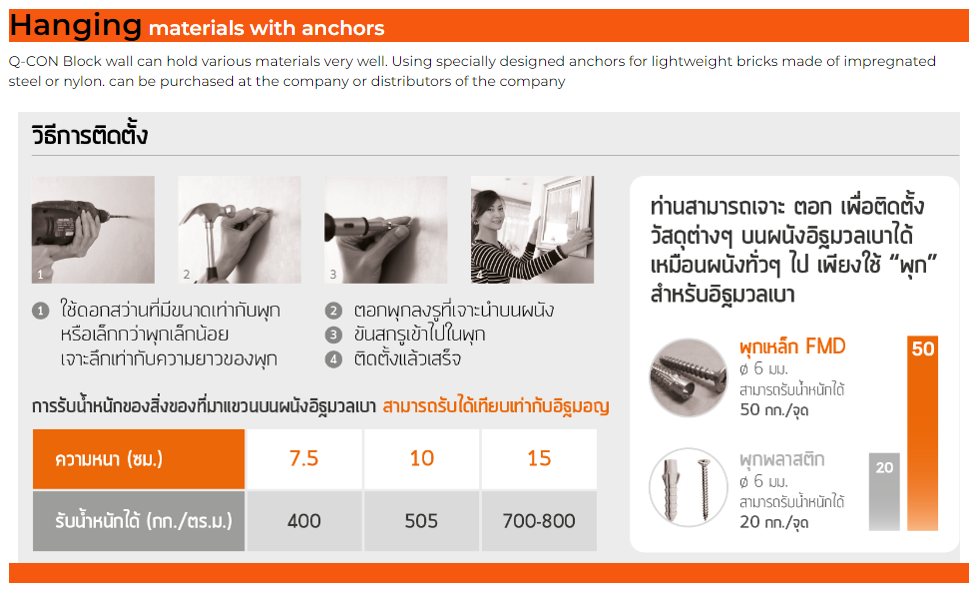-
Posts
1,294 -
Joined
-
Last visited
Content Type
Events
Forums
Downloads
Quizzes
Gallery
Blogs
Everything posted by Encid
-
Not yet. The actual roof is still a way off, as the roof structure needs to completed first, then all the walls (both inside and out) will be rendered before the roof goes up. We did specify BlueScope "sandwich roof" which has 50mm of PU foam and a metal backing sheet, similar to this:
-

How clean are your solar panels?
Encid replied to 007 RED's topic in Alternative/Renewable Energy Forum
Here is a pretty cool solution for cleaning your dirty panels... and only 3,800 baht including delivery: -
Check it out here Basically it applies to their StayCool products and it is valid from now until 1 June. I want the 150mm thick product so will be checking to see if this is included in their "Privilege 1" deal as it is highlighted on their webpage...
-
Whichever make/model you decide to buy, do a price check against this shop. And remember that although HomePro may be one of the most expensive, their pricing usually includes installation. The most popular and reliable brands in Thailand are Mitsubishi Electric (not Mitsu Heavy Industries) and Daikin.
-
Mauritian researchers have developed a solar tracker prototype that increases current by around 37%. The device uses a simplified and mechanical tracking system. Researchers at the University of Mauritius have designed a tracking system that can be used with portable, lightweight PV systems for use in remote areas in tropical climates. The scientists describe the tracker as a low-cost device using a simplified and mechanically driven tracking mechanism. It can be connected to one solar panel and is able to orientate its linear displacement at each of the four corners of the module itself and make it rotate along the three principal axes. A power screw arrangement driven by DC motors enables the movement of the tracker. You can read the full article from PV Magazine here.
-
I heard that the NT monsoonal wet season 2022-2023 rainfall was above average for most of the Top End, so you must be looking forward to the barra fishing during the runoff. Good luck! And yes, I do miss the Darwin lifestyle (and seasons)... it is a unique way of life in Australia. Where else in the world can you legally drive a car on the public roads with an open tinny or stubby (beer) in your hand?
-
ThaiWatsadu have several HDPE mesh types available... all supposedly UV resistant, but I don't know what their real service life would be like.
-
In our situation I intend to initially make a spoon drain next to our access road (yet to be built) and direct the runoff water towards the farm. I want to keep surface runoff and roof drain water well away from our retaining wall... just send it off in another direction.
-
Great idea! What sort of mesh did you use? Metal? Plastic?
-
You are a nice guy hey? One of my neighbours in our moobaan uses an Airsoft BB gun like this to keep the flying rats away... It is pretty accurate but not deadly. Our nickname for him is "Rambo" Disclaimer: I do not and will not ever condone "Rambo's" behaviour... but he certainly enjoys it.
-
Thank you... I think that it's great too! We can air opinions and ideas and as we are in the building stage you can see the actual progress too. My family and friends overseas also like to read this topic to see what we're up to. No immediate plans to do any rain water harvesting, although it might be a future project. A lot depends on the future crops that we are going to try on the farm... with a plentiful aquifer supplying reasonably uncontaminated ground water I don't see an immediate need for rain water harvesting.
-
Thank you. I have worked for a couple of years in Darwin and also a few in Nhulunbuy so I know what top end weather is like... I was working in Darwin during Cyclone Marcus in 2018... unbelievable that despite all the damage nobody was killed. Yes, Isaan weather can be very similar to the NT... but I think that the humidity here in Thailand is much higher and lasts longer.
-
I personally like it! Architects call that style of design "brutalism".
-
No thanks! The BlueScope metal steel roof will be 5cm thick PU foam coated, with a PVC foil/metal sheet facing underneath. The ends of the sheets (both high and low) will be covered by sheet metal and fixed in place by rivets and sealed with silicone so birds (and other rodents) cannot make their way inside the PU foam. The gutter design is such that the metal sheet will be formed so that it fits under the BlueScope metal steel roof, and sealed with silicone. Appropriately formed sheet metal flashing will be installed along the non-gutter sides of the roof and also sealed with silicone. And if birds do become a problem at some time in the future we could always install these along the length of the gutter(s): I agree 100%, and that is what we have done with our current terracotta tiled hip roofed house in Najomtien, but this roof is hidden behind an AAC block façade so gutters are mandatory. And... we have no eaves! As I said earlier, I have had a lot of discussions with my builder about gutters and roof drainage, and I think (and hope) that we have come up with a design that is practical and effective... time will tell. I am still interested to hear thoughts and comments though... we have time to change the design if someone comes up with a brilliant alternative!
-
We have had quite a few discussions about the gutters... how big they should be, how deep, what drain sizes, how many drains there should be etc. Taking into account how heavy the rain can be in Isaan at certain times is a challenge for a concealed sloping roof, and I'm hopeful that our design can handle the torrential and extended deluges that we can expect from a tropical storm or the remains of a cyclone. Here is the upper roof level gutter: And here is the lower level gutter: And this is the principle of design: My builder's original plan was to have 4" PVC drain outlets as follows: But as that upper roof gutter is 12m long I was not convinced that it could handle a tropical deluge without overflowing, so I changed the number of outlets as follows: I am not overly concerned if the lower level gutter overflows (although I'd prefer that it doesn't), as that is covering the external deck area and the Thai kitchen. In any case, the overflow will be directed away from the entrance and exit doors to the house.
-
-
A couple of weeks later and things are progressing albeit much slower than before. Some of the columns have been extended a bit to provide the support necessary for the facia blockwork, and the supporting RC roof beams are being formed and poured in-situ. The facia will conceal a sloping BlueScope roof and gutter similar to this: Not an ideal situation as it is time-consuming work with the associated access (and safety) issues of working at heights. But... it is getting there.
-

Marine / Submersible/hydrogenerators.
Encid replied to Jenkins9039's topic in Alternative/Renewable Energy Forum
The major active hydropower plants in Thailand are Lam TA Khong, Bhumibol Dam, Sirikit, Srinagarind Dam, Srinagarind Pumped Storage, Vajiralongkorn, Rajjaprabha, Bhumibol Pumped Storage, Pak Mun, and Bang lang. Lam TA Khong is the largest hydropower plant in terms of total capacity. The cumulative capacity for hydropower in Thailand was 3.5 GW in 2021. Source -

How about a solar car port on a budget?
Encid replied to Crossy's topic in Alternative/Renewable Energy Forum
Monthly consumption of 1276 kWh... hmmm... similar to mine for April but being 100% PEA supplied my bill was 6,942.50 baht. What was yours? -
-
I did plagiarize that somewhat... but added embellishment here and there to explain further...
-
With any single phase (liquid) piping system the aims are to try to keep the suction piping as large as possible and as short as possible and to reduce in size only to meet the pump's suction nozzle size at the nozzle. Reduction in size should be made by use of eccentric reducers (not concentric) which are flat on top. The suction pipe should be as straight as possible and between 5 to 10 pipe diameters in length. This reduces the possibility of cavitation and ensures that the inlet pressure drop is minimal. Keeping the pump suction piping short ensures that the inlet pressure drop is as low as possible. The straight-run pipe gives the system a uniform velocity across the pipe diameter at the pump inlet. Both are important to achieving optimal suction. Pipe sizing is a balancing act between cost and friction loss. Larger pipes cost more, whereas smaller pipes impose greater friction losses on the system. In terms of diameter, discharge pipe diameter should normally match the discharge nozzle or flange on the pump, but can be larger to reduce friction losses and decrease system pressure. Pump discharge piping should never be reduced in size less than the discharge nozzle except for offtakes to consumer outlets (showers, faucets etc.) because it puts unnecessary back-pressure on the pump and can greatly reduce pump life and performance.
-
We are using the AAC blocks for our build (ThaiCon not QCON... same same), however there is a cinder type concrete block available that incorporates an air gap, which may make them a possible cheaper alternative with some insulating properties. They are called "Fast Bricks" and come in different thicknesses from 3" to 8".


